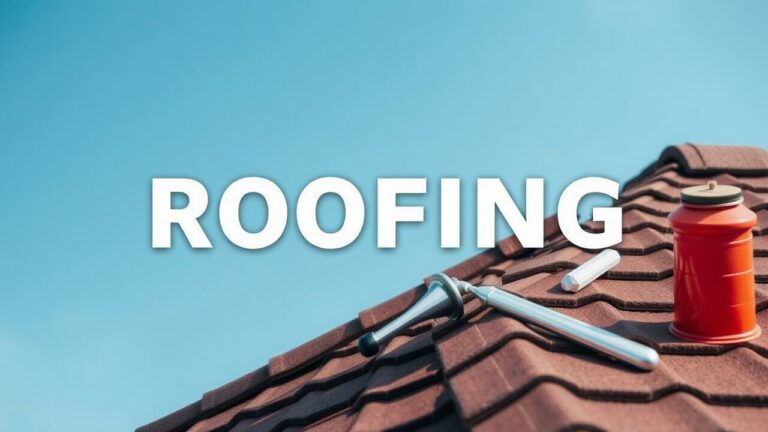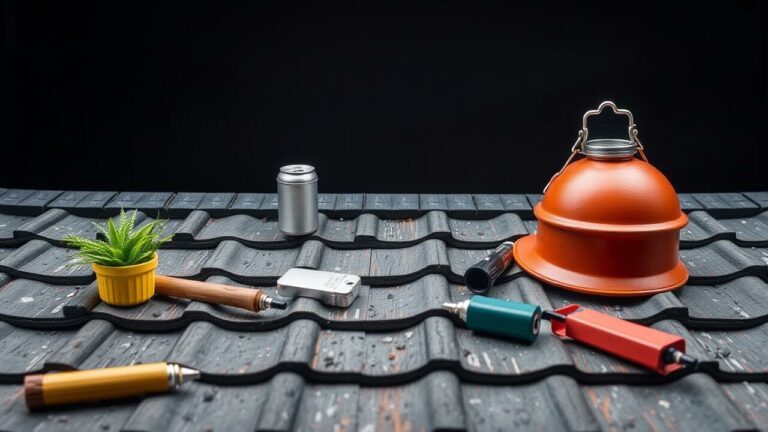Installing a New Roof
Placing and Securing Roofing Materials
When placing and securing roofing materials, it is crucial to start by carefully laying down a weatherproof underlayment to protect the roof deck. Ensure that the underlayment is installed smoothly and without any wrinkles to provide a proper foundation for the roofing materials. Once the underlayment is in place, proceed to install the shingles or tiles starting from the bottom edge of the roof and working your way up.
As you place the roofing materials, make sure to properly align each piece to guarantee a uniform and aesthetically pleasing appearance. While securing the shingles or tiles, use nails or roofing staples to firmly attach them to the roof deck. Be mindful of the manufacturer’s guidelines regarding the spacing of fasteners to ensure the materials are securely held in place. Additionally, remember to overlap each row of roofing materials to prevent water from seeping through the roof surface.
Nailing Down Shingles or Tiles
When nailing down shingles or tiles, it is important to start at the bottom of the roof and work your way up. Position the first row of shingles or tiles along the eaves, making sure they overhang slightly to allow for proper water drainage. Use roofing nails to secure each shingle or tile, ensuring they are firmly in place but not so tight that they crack or warp. As you continue to work up the roof, overlap each subsequent row of shingles or tiles to prevent any gaps where water could seep through.
Make sure to follow the manufacturer’s guidelines for the specific type of shingles or tiles you are using. Different materials may require slightly different installation methods, so it’s important to double-check before proceeding. Take your time with this step, as properly securing the shingles or tiles will ensure a watertight seal and help your new roof last for years to come.
Adding Flashing and Sealants
Adding flashing and sealants is a crucial step in ensuring your new roof is watertight and protected from the elements. Flashing is typically installed around roof openings such as chimneys, vents, skylights, and valleys to prevent water from seeping in. It is important to carefully secure the flashing in place using nails or screws and ensure that it overlaps correctly to create a barrier against water penetration.
Next, sealants are applied to various areas on the roof to provide an additional layer of protection against leaks. Sealants should be used around flashing, vents, and any other gaps or joints in the roofing system. It is important to select a high-quality sealant that is compatible with the roofing materials being used to ensure long-lasting protection. Proper application of sealants helps to create a strong barrier against water infiltration and adds an extra level of security to your new roof installation.
Preventing Leaks Around Chimneys and Vents
Chimneys and vents are common areas where roof leaks can occur if not properly sealed. To prevent leaks around these vulnerable spots, it is crucial to use high-quality flashing materials. Flashing provides a protective barrier that helps direct water away from seams and intersections, reducing the risk of leaks. Ensure that flashing is securely installed and covers the areas where chimneys and vents meet the roof to create a watertight seal.
Regular maintenance is essential to prevent leaks around chimneys and vents. Inspect the flashing periodically to check for signs of wear or damage, such as cracks or gaps. Address any issues promptly by repairing or replacing the flashing as needed. Additionally, keep the surrounding areas clear of debris to prevent water from pooling and causing damage. By taking proactive steps to maintain the integrity of the flashing and keeping the area clean, you can help protect your roof from potential leaks around chimneys and vents.
Ventilating the Roof
Proper ventilation is crucial for a new roof to ensure longevity and optimal performance. By allowing air to circulate in the attic space, ventilation helps regulate temperature and moisture, preventing issues such as mold growth and premature deterioration of roofing materials. There are various ventilation options available, including soffit vents, ridge vents, gable vents, and powered attic ventilators, each serving a specific purpose in maintaining a balanced airflow.
Soffit vents are typically located along the eaves of the roof, drawing in fresh air from the outside. Ridge vents, on the other hand, are installed at the peak of the roof to allow hot air to escape. The combination of intake vents (like soffit vents) and exhaust vents (such as ridge vents) creates a continuous flow of air through the attic space, effectively reducing heat buildup and moisture accumulation. It’s essential to consult with a roofing professional to determine the most suitable ventilation system for your specific roof design and climate conditions.
Installing Soffits and Ridge Vents
To properly install soffits and ridge vents, begin by measuring the length of the soffit area and cutting the soffit material to fit accordingly. Secure the soffit pieces in place using nails or screws, ensuring they are evenly spaced and aligned. This will help provide adequate ventilation and airflow in the attic space, preventing moisture buildup and prolonging the life of the roof.
For ridge vents, carefully measure the length of the ridge and cut the vent material to fit. Install the ridge vent along the length of the roof ridge, making sure it is centered and securely fastened. Ridge vents play a crucial role in ventilating the attic space, allowing hot air to escape and cool air to enter, which helps regulate the temperature inside the home and reduces energy costs. By properly installing soffits and ridge vents, you ensure proper ventilation for your new roof, maintaining its durability and efficiency.
Inspecting the Finished Roof
When inspecting the finished roof, pay close attention to the overall appearance and alignment of the roofing materials. Ensure that shingles or tiles are uniformly placed, aligned, and securely fastened. Any discrepancies in the alignment or gaps between materials should be addressed promptly to prevent future issues such as leaks or water damage.
Additionally, carefully examine the flashing and sealants around chimneys and vents to ensure they are properly installed and sealed. Check for any signs of wear, gaps, or cracks that could potentially lead to leaks. Properly installed flashing and sealants are crucial in maintaining the integrity of the roof and preventing water infiltration.
Checking for Proper Installation and Cleanup
Checking for proper installation and cleanup is crucial to ensure that your new roof is not only functional but also aesthetically pleasing. Start by examining the entire roof surface to confirm that all roofing materials have been installed correctly and securely. Look for any signs of damage or areas that may require additional attention.
Next, take a closer look at the flashing and sealants to ensure that they have been applied properly to prevent any potential leaks. Make sure that all edges and corners are sealed tightly and that there are no gaps or exposed areas. Additionally, inspect the soffits and ridge vents to confirm that they have been installed according to the manufacturer’s instructions. Once you have completed the inspection and confirmed that the roof has been installed correctly, proceed with the cleanup process to remove any debris or leftover materials from the worksite. A clean and tidy finish will not only enhance the overall appearance of your new roof but also prevent any potential hazards or damage in the future.
FAQS
Do I need any special tools to install a new roof?
Yes, you will need tools such as a hammer, nails, roofing materials (shingles or tiles), flashing, sealants, soffits, ridge vents, and safety gear like gloves and goggles.
How long does it typically take to install a new roof?
The time it takes to install a new roof can vary depending on the size of the roof, weather conditions, and the experience of the roofing team. On average, it can take anywhere from a few days to a week to complete the installation.
Can I install a new roof by myself, or do I need to hire a professional?
While it is possible to install a new roof on your own, it is recommended to hire a professional roofing contractor for a complex task like this. They have the expertise, tools, and experience to ensure the roof is installed correctly and safely.
How often should I inspect my new roof for maintenance?
It is recommended to inspect your new roof at least twice a year, preferably in the spring and fall. Look for any signs of damage, loose shingles, or leaks and address them promptly to prevent further damage.
What are some common signs that indicate a need for a new roof?
Some common signs that indicate the need for a new roof include missing or damaged shingles, leaks in the attic, water stains on the ceiling, sagging roof deck, and an increase in energy bills due to poor insulation. If you notice any of these signs, it may be time to consider installing a new roof.







